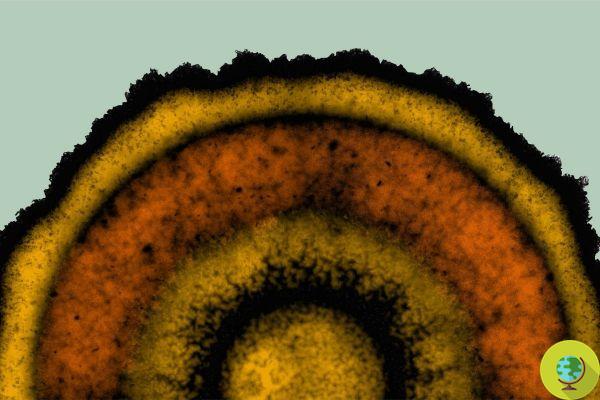
A new study has discovered a mechanism that would allow bacterial communities to organize themselves into sophisticated patterns
He is about to end up run over, his mother saves himA new American study has discovered the existence of a genetic mechanism that would allow bacterial communities to organize themselves in surprisingly sophisticated patterns.
Bacterial cells also organize themselves into complex communities, much like those of plants or animals. This is what emerged from a surprising new study conducted by biologists at the University of California San Diego, who discovered particular characteristics possessed by bacteria that live in communities known as biofilm. Biofilms are also very common in our daily life: we find them in sewer pipes, on kitchen countertops, even on the surface of our teeth. The bacteria living within these communities use sophisticated systems to communicate with each other, as also demonstrated by this study.
Now new observations have brought to the attention of the scientific literature another peculiar characteristic of these bacterial communities, demonstrating that their structure is much more complex than previously thought: the cells of the biofilm, in fact, are organized according to elaborate patterns. - a characteristic, this, until now attributed only to more developed organisms, such as animals or plants.
We are realizing that biofilms are much more sophisticated than we thought - he said Gurol M. Suel, a UC San Diego professor among the study's authors. - From a biological perspective, our results suggest that the concept of cellular patterning during development is much older than previously thought. Apparently, the ability of cells to segment themselves in space and time has not only emerged with plants and vertebrates, but could date back over a billion years.
Through this study, the scientists tried to explain how the various cells that make up the biofilm, despite being so different from each other, could communicate and organize themselves in complex patterns. To do this, a mathematical model was developed that revealed the existence of a mechanism previously observed only in highly evolved organisms (plants, animals and humans): as the biofilm expands, rings are created. concentric that express the different levels of the bacterial community.
Our discovery demonstrates that bacterial biofilms employ a developmental modeling mechanism hitherto believed to be unique to vertebrates and plant systems. Now we understand that bacterial communities are not just blood cells - explains the professor Suel. - Knowing the complex bacterial system allows us to provide some answers to questions concerning vertebrate and plant systems, because bacteria offer more experimentally accessible systems that could provide new insights for the field of development.
Biofilms, as we have said, are found everywhere and are part of our daily lives, so the study results offer interesting implications for a multitude of research areas - from medicine to the food industry and even the military.
Follow your Telegram | Instagram | Facebook | TikTok | Youtube
Sources: University California San Diego / Cell
We also recommend:
- These bacteria accidentally recreated Van Gogh's "Starry Night"
- Unfortunately, oysters are becoming greedy for microplastics due to the bacteria that settle on them
- Pink breast milk? It could be a bacterium's fault


























